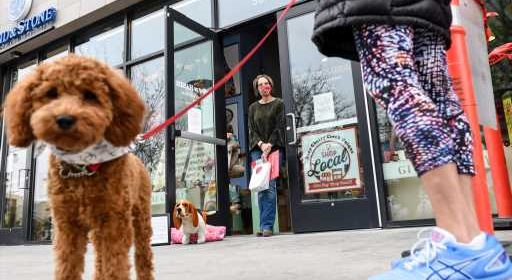Coronavirus model predicts potential danger in Denver this summer, little spread in Colorado Springs

Colorado’s climate could help keep new cases of COVID-19 down through the summer, but meteorological advantages aren’t going to be enough if people return to normal life while the virus is still circulating widely, according to researchers projecting cases for the next three months.
The Children’s Hospital of Philadelphia’s PolicyLab projected how many new coronavirus cases 10 Colorado counties — nine along the Front Range, plus Eagle County — might see this summer, depending on what their residents decide to do.
Dr. David Rubin, a pediatrician and director of the PolicyLab, said cases in Colorado Springs have fallen far enough that El Paso County officials might be able to safely loosen more rules than their counterparts could in the Denver area, which has a higher level of ongoing transmission.
“I think a place like Colorado Springs will be relatively resilient,” he said. “Denver’s a little trickier.”
Denver County currently has 658 confirmed cases per 100,000 people. If Denver maintained the level of social distancing it had under the stay-at-home order, it would be projected to have as few new cases as eight per day in mid-August. In the least-restricted scenario modeled, it could see more than 500 new cases each day by that time.
El Paso County, with 189 cases per 100,000 people, has a much narrower projected range, from zero new cases per day in mid-August under the most-restrictive scenario to 10 new cases daily under the most permissive.
Adams, Arapahoe, Jefferson and Weld counties have projections similar to Denver, though with lower numbers of new daily cases under the worst-case scenario, while Boulder, Douglas and Larimer counties look more like Colorado Springs.
Eagle County, site of Colorado’s earliest outbreak, has successfully brought down its new caseload, and is projected to have zero or one new case per day by the end of August, regardless of what residents do. The model doesn’t account for visitors bringing in new cases, though, so it’s possible transmission could start again if tourists return.
At least three things will determine how the curve changes over the summer, Rubin said: how many cases there are currently in the community, climate and individual decisions. If a community has almost no cases, spread isn’t likely to take off even if people start congregating again — unless new cases come in from areas with more extensive spread, he said.
The effects of climate are a bit trickier to nail down, but so far it appears that hot, dry and sunny areas have an advantage, because the virus is less likely to be viable at high temperatures or when exposed to ultraviolet light, Rubin said. Colorado could benefit from its climate, but that’s not going to be enough if communities haven’t suppressed their cases and people start mixing as normal, he said.
The model doesn’t account for all decisions people might make, like whether to wear masks or spend time with others outdoors, Rubin said. It relies on cellphone tracking data as a measure of how many trips the average person makes to nonessential businesses.

Most counties reduced trips by 60% to 70%, Rubin said. That means, for example, that if an average person went shopping recreationally six times a month, they’d now make only two trips.The projections modeled scenarios where people went out at half their normal rate (three times for our six-time shopper) and two-thirds of the normal rate (four trips, in this example). While one extra trip each month might seem small, it adds up to quite a few extra chances to pass the virus when tens of thousands of other people do the same thing.
While climate might help Colorado in the summer, at least some counties would be primed for an explosion of cases come September if people don’t use caution and the virus continues to spread, Rubin said. He likened Denver’s population, which lives in denser conditions than in much of Colorado, to “tinder” that could spark, perhaps even under summer’s favorable conditions.
“The more cautious you are, the better you are in the long-term,” he said. “The strength of our individual behaviors is what’s going to get us through what could be a difficult fall and winter.”
Join our Facebook group for the latest updates on coronavirus in Colorado.
Source: Read Full Article